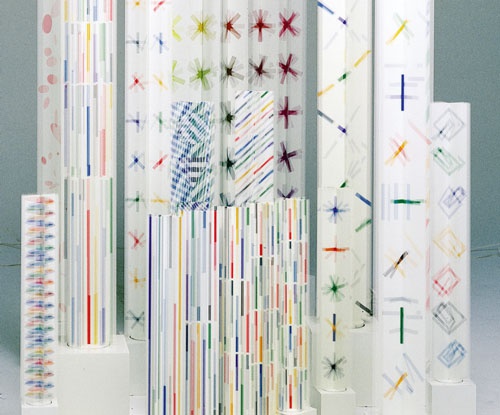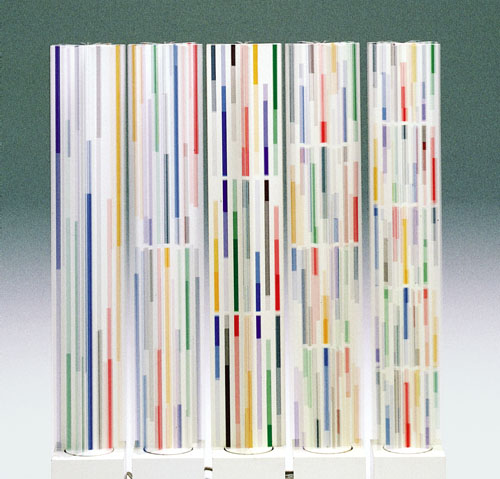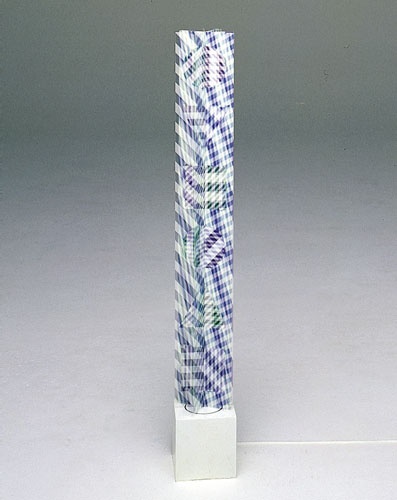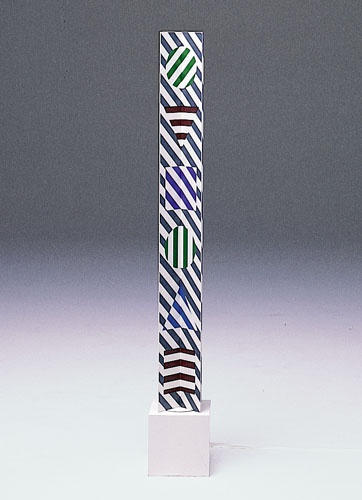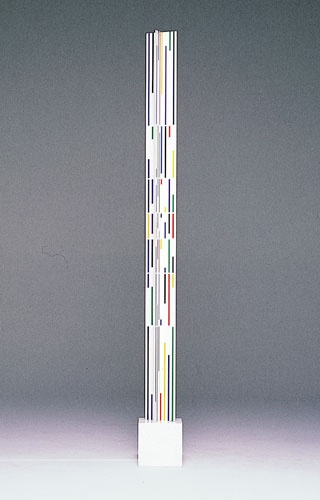Flickscape
断面が同厚の板材でL字型をした縦長の金属板を四枚合わせて、十字型の断面を造り、先端に芯棒を付けて、それを電動で回転させ、二次元から三次元世界へ誘う動く彫刻〈Flickscape〉(1983)を32歳の時に発表した。回転し始めるとそれぞれの絵柄が動き、回転していなかった時からは想像できない、まるで映像世界に立ち会っていると感じるぐらいになる。
この動く彫刻に挑戦した契機は、マルセル・デュシャン(1887-1968)が33歳の頃、光学実験を行うようになって世に出した作品《回転ガラス板〈精密工学)》(1920)、『アネミック・シネマ』(1926)等、回転して初めて我々の視覚世界に飛び込んでくる不思議な三次元世界を見たことからだが……。わたしの作品〈Flickscape〉は、それ等デュシャンの作品とは全く違う狙いで制作したものであり、回転を加えて初めて現れてくる“新しい風景”を見る実験となった。
When I was 32 years-old I presented a series of moving sculptures Flickscape, in which the cross-shaped cross-section was made from four L-shaped vertical metal plates of the same thickness, and an axle was attached to the end. By rotating electrically it lured you from a 2-D to a 3-D world. When it starts to rotate, each pattern moves, and you feel as if you are witnessing a visual world, the likes of which are unimaginable before it starts rotating.
The person who inspired me to try my hand at moving sculptures was Marcel Duchamp (1887-1968), whose works Rotary Glass Plates, Precision Optic (1920) and Anemic Cinema (1926), etc., were brought to the world when he began conducting optical experiments at the age of 33 years old. It was only when these are rotated that we see this strange 3-D world popping into our visual field... My work Flickscape, however, was produced with a completely different aim to Duchamp’s work, and I experimented with seeing a “new landscape” that appeared in addition to the rotation.

